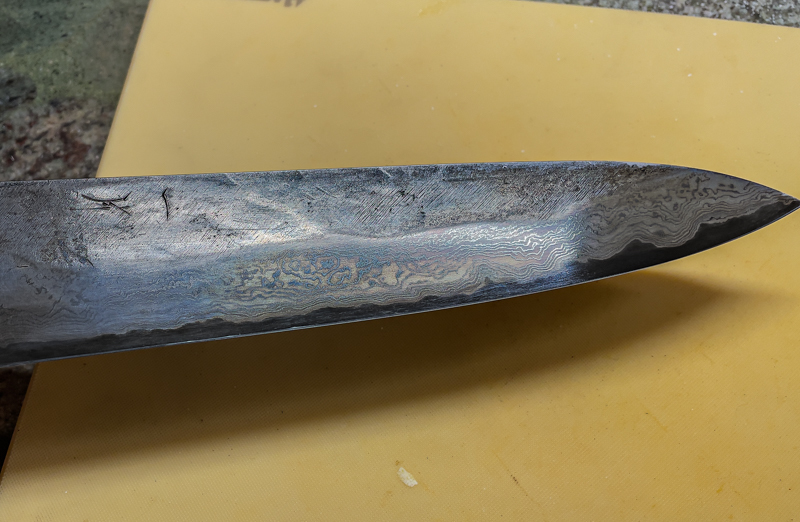The idea was sparked by the blue patina I noticed on some of my Blue 2 knives after I sliced a bunch of granny smiths to make pies with. I was hoping a malic acid bath would smurf out the blade, but it darkened deeply instead. Of course, this was a much more acidic solution. I happened to have a sack of malic acid on hand so I dissolved some into a liter of water on the stovetop. I didn't really measure, but I used quite a bit. It was definitely more acidic than mustard or coffee -- well into the stronger vinegar range. Once the crystals were dissolved, I placed the hot solution (maybe 160F) into a container along with the knife so that it covered everything up to the very tip of the bolster.
The bolster did not react at all, which surprised me. I checked the color of the blade after about 5 minutes and did an initial wash to see if the patina was staying put. It needed more time, so I put it back -- repeating this process every 5 or so minutes for 20 minutes. By that time I was satisfied with the color and evenness of the patina. The edge got less sharp, but only required a few strokes across a fine stone to bring it back. The Kramer 52100 isn't very reactive, but I had recently stripped all the patina back because it was splotchy and dirty looking, and the stripping made the whole blade as reactive as it was when I first got it. Again, this wasn't very reactive but I'm sensitive to the onion/steel reaction and wanted to go ahead and take care of that.


















